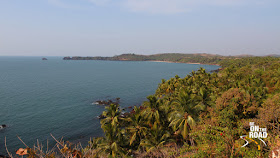
This weekend floating market is called the Taling Chan floating market and can be visited either from the water or on land. I generally try to avoid land travel as much as possible in Bangkok owing to its snarling traffic and hence don’t recommend the land route, but if you wish to take it, it should take you between 2 to 3 hours to reach the Taling Chan floating market.

Exploring Bangkok from over the water is one of my more preferred routes and say for example, you are in Silom, the heart of downtown Bangkok, you can reach the floating market in less than 60 minutes. And these 60 minutes will be eventful as they will offer you lovely sights of local traditions and some great buildings like Wat Arun, Chinatown and more. If you are coming from Silom, you can head to the Sathorn pier. Here, you can either take a through long tail boat (a slightly expensive option) or take the Chao Phraya Express to Tha Thien and then take a long tail boat for the smaller canals.

It is best to visit the floating market in the early hours of the evening as that is when the market is at its active best and the weather is also the most conducive to lots of walking and outdoor travel. If you take the river cruise route, you will see a lot of canal life and realize why is Bangkok referred to as the ‘Venice of the East’.

There will be sights of a postman coming on a boat and delivering mail to the houses located by the canals, pork sellers on boats, vegetable sellers on boats and much more. And once you reach the floating market, you will see an exponential increase in the floating life with vegetable sellers, flower sellers, meat sellers, fish sellers and all kinds of other eatables being sold in boats floating on one of the canals.

My favorite way of absorbing the smells and sights of such a floating market would be to start off with an ice old tender coconut water and then slowly walk through the myriad of boats and stalls selling everything from fruits to flowers, plants to fishes, meats to peanut candy, herbs to snacks and juices to small gift items. Depending on what appeals to your mind and taste buds, you can buy from any of the stalls and keep munching and exploring more.

If you feel like you need to give your legs a rest, head into one of the floating restaurants, order a drink or a snack and watch the floating life in live action in front of your eyes. You can also listen to some of the local music being played there. There is so much happening that as a visitor, you will never get bored.

A 2 to 3 hour visit would be ideal for a stay in the weekend floating market, but you can stay longer if you feel like it. You can go back into town by boat or take the land route. This weekend floating market is a must see on your itinerary if you cannot visit the other floating markets located outside Bangkok.









 For the
For the 




























